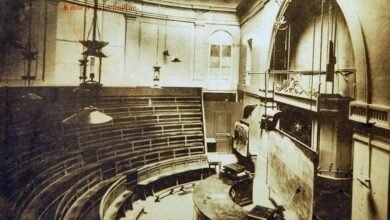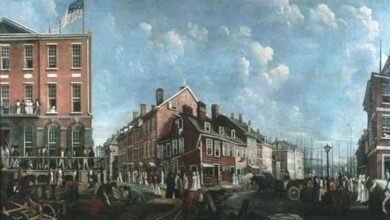Adirondack Council Celebrates 50th Anniversary


 Founded as a coalition of national, regional and local environmental organizations in January 1975, the Adirondack Council was created 50 years ago to focus attention on the emerging threats of acid rain, declining biodiversity and the increasing subdivision and development of wildlands in the Adirondack Park.
Founded as a coalition of national, regional and local environmental organizations in January 1975, the Adirondack Council was created 50 years ago to focus attention on the emerging threats of acid rain, declining biodiversity and the increasing subdivision and development of wildlands in the Adirondack Park.
The 9,300-square-mile Adirondack Park is one of the largest intact temperate deciduous forest ecosystems left in the world. It is home to about 130,000 New York residents in some 130 rural communities.
Over five decades, the organization grew from a single staff member into a small, regional membership, a handful of staff and a budget of about half a million dollars a year. It has evolved into an organization with 17 full time staff and members in all 50 states, with a budget of nearly $3 million annually.
“For 50 years, we have drawn on science and a deep understanding of the state and federal political process to realize a long-range vision of a Park with clean water and air, large wilderness areas, working farms and forests, and vibrant communities,” said Adirondack Council Executive Director Raul J. Aguirre.
The Council’s 2020 VISION series, first released in 1988, outlined a plan to protect some of the wildest places in the Adirondacks. More than 75% of the parcels identified are now protected as state land, according to Sarah C. Hatfield, Chair of the Adirondack Council Board of Directors.
In Albany, the Council is expected to focus during this legislative session on funding for the Survey of Climate and Adirondack Lake Ecosystems, Timbuctoo Climate and Careers Institute, municipal clean water projects, an enhanced Environmental Protection Fund and the protection of the Whitney Estate in Long Lake.
The survey is a multi-year program bringing together scientific research institutions to study the impacts of air pollution and climate change on Adirondack waters.
The institute brings high school students from Brooklyn to the Adirondacks to learn how to gain the training and credential for careers in wilderness management or environmental science.
The Council said it is planning seek enhanced municipal clean water funding and a 25% increase in the Environmental Protection Fund, which pays for ecological capital projects. The Whitney Estate is a 36,000-acre forest containing 22 interconnected lakes and important wildlife habitat.
In Washington DC, the Council is planning to work to preserve current protections from air pollution and acid rain, and seek more action on climate change issues. With a change in administrations, Council staff say they expect to spend considerable time defending current protections for the Park’s clean water and air.
Adirondack Council History
At the Adirondack Council’s foundational meeting on January 13, 1975, William Hord of Silver Lake, Clinton County (representing the Hawkeye Property Owners Association) was presiding.
Attendees included John H. Adams, President, Natural Resources Defense Council; Arthur M. Crocker, President, The Association for the Protection of the Adirondacks (now known as Protect the Adirondacks); Glenn W. Fish, President, Adirondack Mountain Club; Alfred S. Forsyth, President, Atlantic Chapter, Sierra Club; Harold K. Hochschild, founder of the Adirondack Museum (now Adirondack Experience, or ADKX); Philip Hoose, Atlantic Chapter of Sierra Club, staff; Courtney Jones, President, the Adirondack Foundation; Robert Kafin and Neil E. Needleman, of the Glens Falls environmental law firm Kafin and Needleman; Frank J. Oliver, President, Adirondack Mountain Club Foundation; William Rockefeller, Upper Saranac Lake; James Rogers, III, Hawkeye Property owners Association; Arthur Savage, President, the Adirondack Conservancy Committee of The Nature Conservancy.
At its first meeting attendees were concerned that Wambat Realty had proposed a 2,200-acre subdivision and development called Valmont Village in Black Brook, Clinton County.
The development would have created a grid of several hundred new vacation homes along the shoreline of Silver Lake. The developers rejected the authority of the newly created Adirondack Park Agency (1973) and in Wombat Realty Corp. v State of New York, 41 N.Y. 2d. 490 (1977) sued the state, claiming that the APA’s zoning authority over private land was unconstitutional.
Excerpts from the minutes of the organizational meeting of the Adirondack Council:
“Mr. Sive commented upon the Wambat case and other dangerous actions and said “a mechanism must be established to pick those matters in which we intervene, to conduct fund raising on a continuing basis, to secure as much as we can by way of voluntary contributions of services, and act as a monitor of Agency proceedings.” It was suggested that such a new consortium be called the Adirondack Council…
“It was unanimously decided to recommend to the Boards of each organization that they approve the Adirondack Council concept and designate a representative and an alternate and that other major organizations interested in the protection of the Adirondacks be invited to join…
“Mr. Forsyth and Mr. Hoose reported that at a meeting held in Albany last weekend it had been recommended that a special joint Legal Defense Committee be organized.
“It was the consensus of those present that such a legal committee should be a part of the Adirondack Council but that the Council should not necessarily limit its activities to legal matters…
“At this point Mr. Hochschild left the meeting because of another appointment. Just before he departed Mr. Hochschild commented to the effect that in his opinion the concept is good and the Council is necessary and we need money.
“Mr. James Rogers, III who is domiciled in Lake Placid and owns radio station WNBZ in Saranac Lake, then commented upon the attitudes of persons living within the Adirondack Park and the reaction of the media to the Adirondack Park Agency’s activities.
“There is considerable criticism of the Agency. Those present were of the opinion that the Adirondack Council should feel a moral obligation to do all it can to provide accurate information to the people of the Adirondacks.”
Read more stories about the Adirondacks.
Illustration: Gary Randorf’s “View from Mount Marcy.” Randorf was the Adirondack Council’s first Executive Director.
Source link





